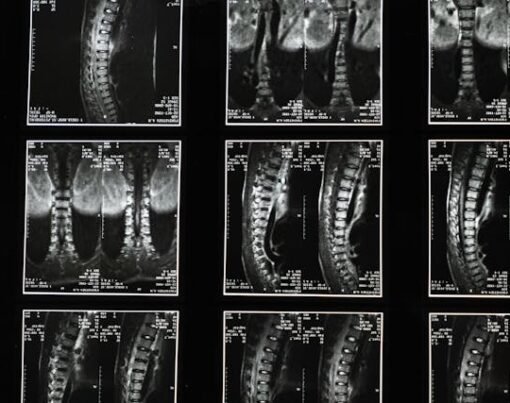Post-workout recovery is an essential component of any effective fitness regimen, often determining the overall success of your training efforts. Proper recovery not only enhances your physical performance but also minimizes the risk of injury, aiding in muscle growth and overall body resilience. Whether you’re a seasoned athlete or a fitness newbie, understanding and implementing the right recovery techniques can profoundly impact your athletic longevity and effectiveness. This article explores various proven strategies to maximize your post-workout recovery, ensuring you get the most out of every workout session.
Table of Contents
1. Cool Down Properly
A proper cool-down session is crucial to begin the recovery process right after your workout ends. Cooling down helps to gradually decrease your heart rate and can prevent the dizziness or lightheadedness often associated with blood pooling in the larger muscles. Incorporate 5 to 10 minutes of light jogging or walking followed by gentle stretching. This not only helps in reducing muscle stiffness but also assists in the removal of lactic acid buildup in the muscles, which can contribute to soreness.
2. Hydrate Immediately
Rehydration is vital after a workout as it helps to replace the fluids lost through sweat and maintains cellular functions in your body that are essential for recovery. Drinking water or electrolyte-rich beverages soon after exercising can help restore hydration levels, maintain a balance of body fluids, and ensure that your body recovers adequately from the stress of exercise. This also aids in the processing and flushing out of metabolic waste products accumulated during intense workouts.
3. Use Anti-Inflammatory Aids
Inflammation is a common response by the body to exercise stress, manifesting as muscle soreness and stiffness. Incorporating natural anti-inflammatory aids such as Curcumin Phytosome can significantly enhance recovery. Curcumin, the active ingredient in turmeric, has been shown to reduce inflammation and pain, accelerating recovery times and improving subsequent performance. Supplements like Curcumin Phytosome are specifically designed to increase the bioavailability of curcumin, making them potentially more effective than traditional turmeric powders.
4. Prioritize Protein Intake
Protein is a key nutrient for muscle repair and growth. Consuming protein soon after your workout—ideally within 30 minutes—can provide your body with the amino acids necessary to begin repairing the micro-tears in muscle fibers caused by intense exercise. This not only speeds up the recovery process but also facilitates muscle growth. Opt for easily digestible protein sources, such as whey protein shakes or a meal containing lean meats or fish, to kickstart your recovery efficiently.
5. Manage Sleep Quality
Sleep is perhaps the most potent form of recovery. Quality sleep promotes muscle repair, hormone regulation, and overall recovery through the synthesis of proteins and human growth hormone release during deep sleep cycles. Adults should try get 7-9 hours of sleep per night to obtain the restorative benefits needed for recovery. Enhancing sleep quality can involve maintaining a cool, dark, and quiet sleeping environment and establishing a regular sleep schedule that aligns with your circadian rhythms.
6. Try Active Recovery
On days off from intense workouts, active recovery can be a beneficial strategy to keep the muscles moving without undergoing the same level of strain. Activities like light yoga, gentle swimming, or a leisurely bike ride help maintain blood flow to the muscles, promoting nutrient delivery and waste removal. This not only aids in quicker recovery but also helps maintain overall cardiovascular health without the stress of intense workouts.
7. Stretch and Use Foam Rollers
Stretching and using foam rollers are excellent methods for enhancing flexibility and reducing muscle tightness, both of which contribute significantly to recovery. Stretching helps to elongate the muscles, releasing tension and potentially reducing soreness. Foam rolling, or self-myofascial release, targets specific muscle groups and trigger points to relieve tension and increase blood flow. These practices not only aid in the recovery of muscles but also prepare them for future workouts by maintaining muscle health and preventing injuries.
8. Opt for Massage Therapy
Massage therapy is another effective tool for post-workout recovery. It works by manipulating soft tissues to improve circulation, reduce muscle tightness, and decrease stress levels. Various massage techniques, such as deep tissue or sports massage, can specifically target areas most affected by intense physical activity. Regular massage sessions can help break down knots in muscles and connective tissue, leading to enhanced flexibility and better overall muscle function.
9. Monitor and Adapt Workouts
To ensure optimal recovery, it is crucial to monitor your body’s response to different workouts and adjust accordingly. Paying attention to signs of excessive fatigue or persistent soreness can indicate whether you might be overtraining or if your body needs more time to recover. Utilizing tools such as fitness trackers can help provide concrete data on your physical responses, while keeping a training log can help you identify patterns and make necessary adjustments to your workout intensity, duration, or frequency.
10. Incorporate Rest Days
Rest days are essential to any training regimen, allowing for complete physiological and psychological recovery. These days should be strategically planned to follow intense training sessions or extended periods of physical activity. During rest days, it’s important to avoid strenuous activities that tax the muscles you’ve been working on; instead, focus on relaxation and recovery techniques that do not involve intense physical exertion. Remember, growth occurs during rest, not just during training.
Utilizing Comprehensive Recovery Strategies
Enhancing post-workout recovery involves a multifaceted approach that addresses both physical and mental aspects of health. By integrating strategies such as the ones outlined, athletes and fitness enthusiasts can significantly improve their recovery processes. Additionally, paying attention to mental recovery and managing stress are equally important to ensure that the body and mind are prepared for the demands of ongoing physical activities.
Adopting these effective recovery techniques not only maximizes performance and prevents injuries but also contributes to a more balanced and sustainable fitness lifestyle. The goal of recovery is to allow you to return to your activities stronger and more prepared than before. Embrace these strategies as part of your regular routine, and you’ll likely see marked improvements in both your physical performance and your overall health.










